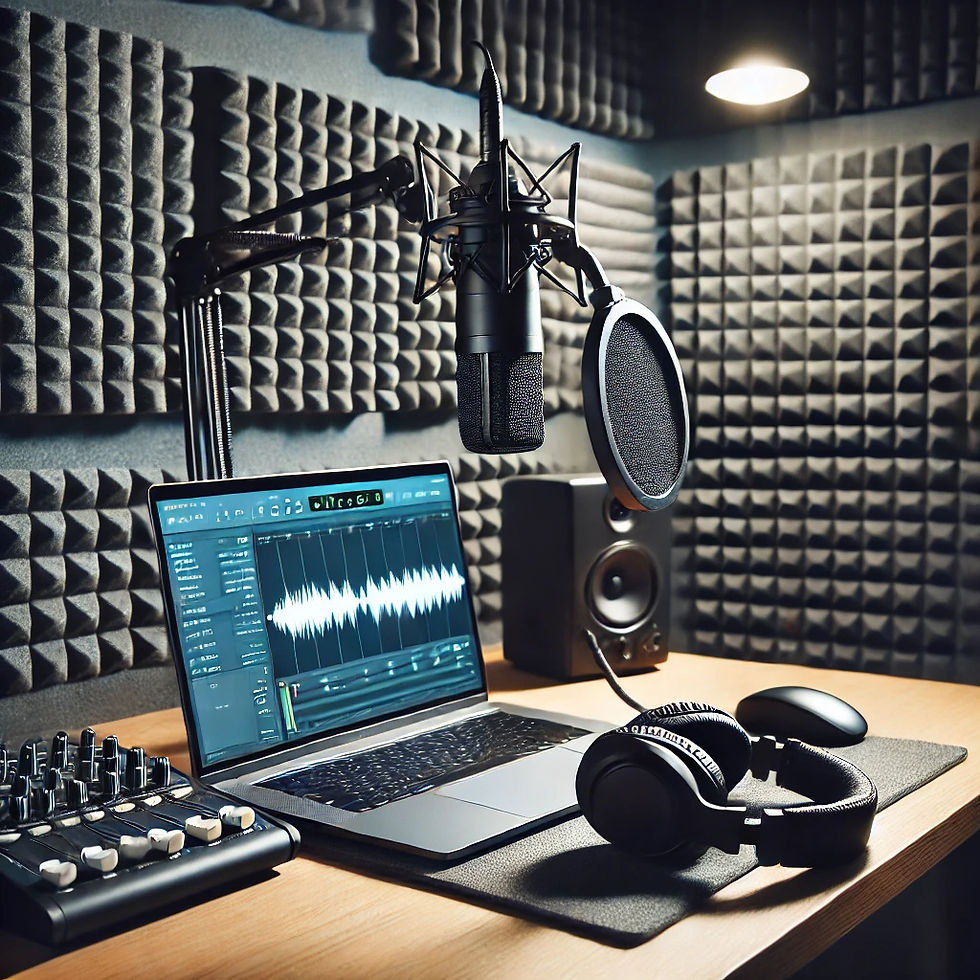How to Achieve Crisp Podcast Audio: Essential Tips for Recording
- The Podcast Editor
- Sep 4, 2024
- 3 min read
Updated: Oct 8, 2024

If you're a podcaster, you know that audio quality can make or break your show. While post-production can fix some issues, it's always best to get the audio right during the recording process. Here's a guide to help you achieve crisp, smooth audio without relying on extensive post-production editing.
1. Assess Your Recording Environment
The environment you record in plays a significant role in your podcast's audio quality. To minimize background noise and echo:
Choose a quiet, controlled space for recording. Avoid rooms with lots of hard surfaces that can cause sound reflections.
Consider adding soundproofing materials, such as acoustic foam or blankets, to absorb noise and reduce echo.
Position your microphone away from reflective surfaces like windows or bare walls to minimize reverb.
2. Select and Position Your Microphone Correctly
Using the right microphone is crucial for capturing high-quality audio:
Opt for a microphone that's suited for podcasting. Dynamic microphones like the Shure SM7B or condenser microphones like the Audio-Technica AT2020 are popular choices.
Place the microphone about 6 to 12 inches from your mouth. Angle it slightly to avoid plosive sounds, which are those harsh “p” and “b” sounds that can distort your audio.
3. Optimize Your Audio Interface and Settings
Your audio interface is the bridge between your microphone and computer. To ensure clean audio:
Use a reliable audio interface and set the input levels correctly. Too high a level can cause clipping and distortion, while too low can result in weak, noisy audio.
Aim to keep your gain levels between -12dB and -6dB. This range allows for clear audio without risking distortion.
4. Monitor in Real-Time with Headphones
Monitoring your audio as you record is essential:
Use closed-back headphones to monitor the audio in real-time. This setup lets you catch and correct issues immediately, rather than discovering them later during editing.
5. Configure Your Software Settings
Proper software configuration can make a big difference in your recording quality:
Set your recording software to a sample rate of 44.1 kHz or 48 kHz, and a bit depth of 24-bit. These settings offer a good balance between file size and audio quality.
If your setup allows, enable low-latency monitoring to hear your audio with minimal delay as you record.
6. Perform a Pre-Recording Test
Before diving into your podcast episode:
Always conduct a short test recording. This step lets you check for any issues with your setup and make adjustments as needed.
7. Master Basic Recording Techniques
Good recording habits contribute to better audio:
Keep a consistent distance from the microphone throughout your recording. Sudden movements or varying distances can cause fluctuations in volume and sound quality.
Use a pop filter or windscreen to reduce plosive sounds and protect your microphone from moisture.
8. Consider a Backup Recording
Finally, it’s wise to have a backup plan:
Use a secondary recording device, like a portable recorder, as a backup. This ensures that you have a clean recording even if your primary setup fails.
By following these tips, you can significantly enhance the audio quality of your podcast during the recording process, making post-production much easier. Achieving crisp, smooth audio starts with careful planning and the right techniques. Happy podcasting!
If you’re looking for professional podcast editing services to take your audio to the next level, I’m here to help. With years of experience in podcast editing, I can ensure your episodes sound polished and professional, allowing you to focus on creating great content. Whether you need help with audio cleanup, sound design, or final mastering, feel free to reach out and let’s make your podcast shine!






Comments